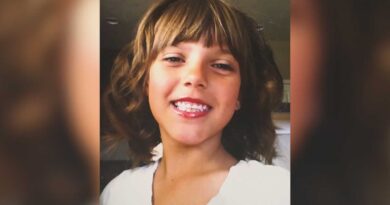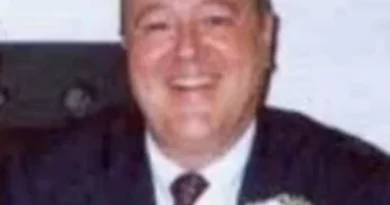Ann Smith and Tony de los Reyes Killed by Corrupt Police Officer Bill Leasure in Los Angeles California
The early 1980s in Los Angeles were turbulent years for law enforcement. The city was grappling with rising crime rates, gang violence, and a deepening public skepticism toward the police. Amid that backdrop, a story emerged that would shock even the most jaded observers: a veteran LAPD traffic officer accused of orchestrating and facilitating two cold-blooded contract killings. William Ernest “Bill” Leasure, a uniformed officer sworn to protect the public, led a double life that blurred the line between upholding the law and exploiting it for personal gain. His name would become synonymous with corruption, betrayal, and the hidden rot that can exist within institutions of power.
Between 1980 and 1981, two seemingly unrelated murders occurred in Los Angeles — one in Highland Park, the other in Sherman Oaks. At first glance, they appeared to be isolated acts of violence. But years later, investigators would link both crimes to Leasure, revealing a web of greed, betrayal, and criminal enterprise that reached far beyond simple homicide.
William “Bill” Leasure: The Man Behind the Badge
Leasure was no rookie. By the late 1970s, he had spent over a decade on the force, primarily as a traffic officer. Known for his quiet demeanor and understated presence, colleagues nicknamed him “Mild Bill.” Yet beneath the calm exterior, Leasure cultivated a separate identity that thrived in the shadows.
His sideline was lucrative — and illegal. By the early 1980s, Leasure was deeply involved in a luxury yacht theft and insurance fraud operation, stealing vessels worth millions of dollars. The operation required precision, planning, and trust — the same qualities that made him effective as a police officer also made him an ideal criminal conspirator.
But yacht theft wasn’t his only illicit venture. Leasure had access to people in desperate situations, some of whom wanted others out of the way permanently. Over time, his name would surface in connection with murder-for-hire schemes — the kind of work that demanded secrecy, criminal contacts, and a willingness to trade human lives for money.
The Murder of Ann Smith – May 1980
In May 1980, 41-year-old Ann Smith was found dead inside her mother’s beauty salon in the Highland Park neighborhood of Los Angeles. The scene was staged to resemble a robbery gone wrong: cash drawers were disturbed, and items appeared to be missing.
Ann had been shot at close range. Almost immediately, whispers circulated about marital troubles between Ann and her husband, Arthur Gayle Smith. The couple’s relationship had reportedly deteriorated to the point where friends suspected infidelity and disputes over finances.
What wasn’t clear in 1980 was that the murder had been arranged in advance. According to later testimony, Arthur Gayle Smith sought to eliminate his wife and turned to William Leasure for assistance. Leasure didn’t pull the trigger himself; instead, he recruited an associate, Dennis France, to carry out the shooting. France, in turn, followed Leasure’s instructions: enter the salon, kill Ann, and make it look like a robbery.
The plan went off without a hitch — or so it seemed. For years, the case languished without charges against the true perpetrators. Another man, Nicholas Persico, was wrongfully convicted of Ann’s murder and served several years in prison before being exonerated. The real conspiracy remained hidden, shielded by Leasure’s badge and the silence of those involved.
The Murder of Tony de los Reyes – September 1981
Just over a year later, on a September night in 1981, 63-year-old jazz bassist Tony de los Reyes was gunned down outside a lounge in Sherman Oaks. De los Reyes was well-known in the music scene, a talented musician with a rich career. But behind the scenes, his marriage to Paulette D. de los Reyes was crumbling.
Like the Smith case, this murder would later be revealed as a contract killing. Paulette allegedly sought to remove her husband for financial or personal reasons and turned to Leasure for help. Leasure, consistent with his pattern, enlisted France once again to execute the killing.
The circumstances mirrored the first crime: the murder took place in a public space, yet no immediate leads connected the killing to Leasure or Paulette. Witness accounts were scarce, and no one could initially place the mild-mannered traffic officer at the scene — though, according to later testimony, he was close by in a getaway vehicle.
The Double Life Unravels – 1986 Yacht Sting
Leasure’s downfall did not begin with the murders. Instead, it began with his other criminal enterprise: yacht theft. In May 1986, law enforcement set up a sting operation at the Richmond Marina in the San Francisco Bay Area. The target was a stolen yacht, and when Leasure arrived, investigators swooped in.
During the investigation into the yacht theft ring, detectives uncovered disturbing links between Leasure and the long-unsolved murders of Ann Smith and Tony de los Reyes. Witnesses began to talk, particularly Dennis France, who eventually cooperated in exchange for immunity. France’s testimony painted Leasure as the architect of both killings — the man who arranged the contracts, planned the logistics, and ensured the shooters escaped undetected.
Arrest and Charges – 1987
In 1987, prosecutors charged Leasure with two counts of murder, conspiracy to commit murder, and other related offenses. Alongside him, Arthur Gayle Smith and Paulette D. de los Reyes were accused of soliciting the killings of their respective spouses.
Prosecutors also named Leasure as a suspect in a third, earlier contract killing — the 1977 murder of Gilberto Cervantes in San Gabriel — though that case would never lead to charges against him.
The 1991 Trial and Mistrial
Leasure’s trial began in April 1991 and quickly became one of Los Angeles’ most closely watched criminal cases. Prosecutors portrayed him as “the most corrupt cop in Los Angeles,” a man who used his position not to serve the public but to enrich himself through theft and murder.
The state’s key witness, Dennis France, testified that Leasure paid him $3,500 for the Smith killing and gave him explicit instructions to stage the scene as a robbery. France also described the de los Reyes killing, recounting how Leasure again waited in a nearby car, ready to facilitate the escape.
One particularly damning piece of evidence emerged from a hidden-camera jailhouse video. In it, when asked about the murder weapon, Leasure wrote a single word on a piece of paper: “Melted.” Prosecutors argued this showed his knowledge of the weapon’s destruction.
Despite the testimony and evidence, the jury deadlocked 10–2 in favor of conviction, leading the judge to declare a mistrial in June 1991.
Plea Deal and Sentencing
With a retrial looming and facing the possibility of a life sentence, Leasure opted for a strategic move. In November 1991, he pleaded no contest to two counts of second-degree murder. The plea deal spared him the death penalty and limited his exposure to the maximum sentence for second-degree charges.
In December 1991, the court sentenced him to two terms of 15 years to life, to be served concurrently. Leasure never admitted guilt, maintaining that he took the plea to avoid the uncertainty of another trial.
Parole Battles and 2020 Reversal
Over the years, Leasure became eligible for parole. In 2020, the California Board of Parole Hearings initially granted him release. However, Governor Gavin Newsom reversed the decision, citing Leasure’s lack of insight into his crimes, his continued minimization of his role, and the nature of the murders themselves.
The governor’s report emphasized the calculated nature of the killings, Leasure’s abuse of his position as a police officer, and the lingering danger he might pose if released.
Release in 2025
After decades in prison, Leasure was finally released in March 2025. His release drew mixed reactions: some viewed it as a routine outcome of the parole system for an aging inmate, while others saw it as an affront to justice, given the calculated and cold-blooded nature of his crimes.
Even in freedom, Leasure’s name remains a dark stain on the LAPD’s history. His case serves as a reminder of how the power and trust granted to law enforcement can be catastrophically misused when placed in the wrong hands.
Legacy of the Case
The murders of Ann Smith and Tony de los Reyes exposed more than just one man’s corruption — they revealed systemic vulnerabilities in the way police officers are monitored and held accountable. Leasure’s ability to carry out crimes while wearing a badge challenged the notion that such betrayals are rare aberrations.
The wrongful conviction of Nicholas Persico in the Smith case underscored the broader consequences of investigative failures and the danger of tunnel vision. For the families of Ann Smith and Tony de los Reyes, the truth came too late to prevent years of injustice and grief.
Today, the Leasure case is still studied as an example of police misconduct taken to its extreme — a chilling blend of greed, calculation, and betrayal, committed by a man who was supposed to serve and protect.
Discover more from City Towner
Subscribe to get the latest posts sent to your email.




